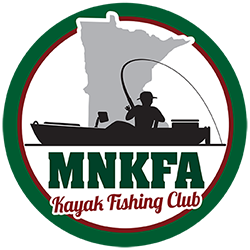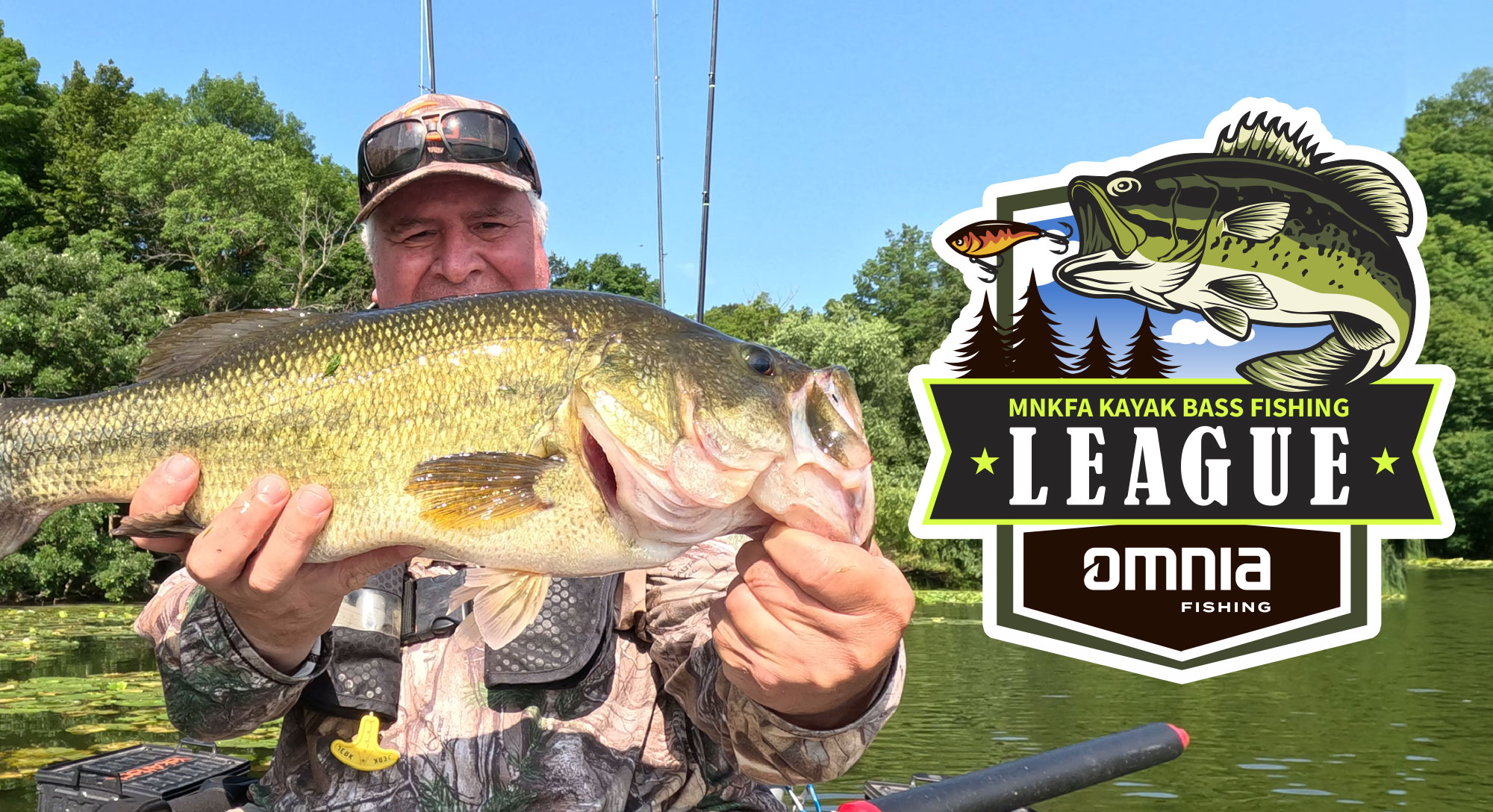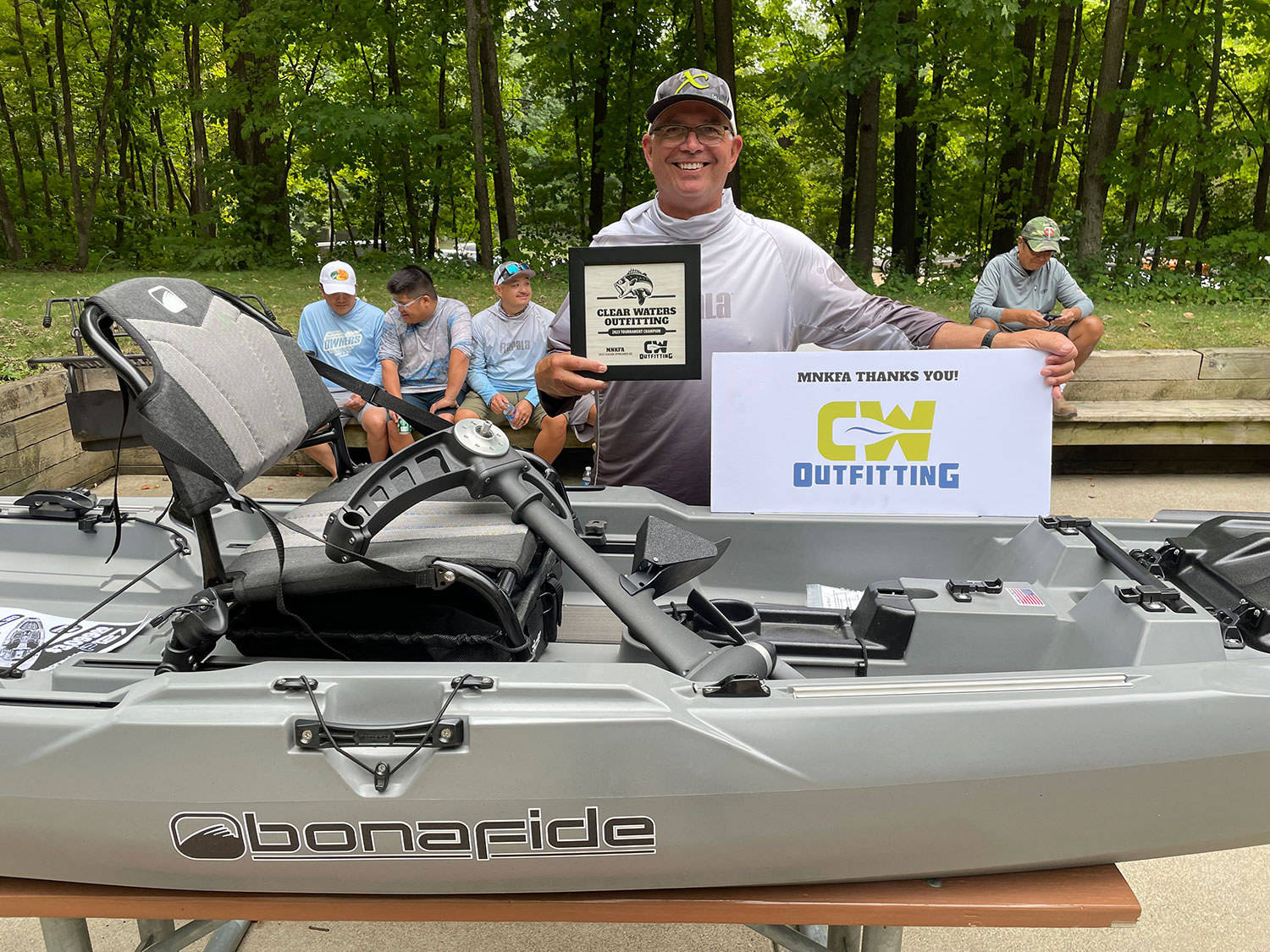The Ultimate Guide to the Best Kayak Fishing Bass League in Minnesota If you're a…
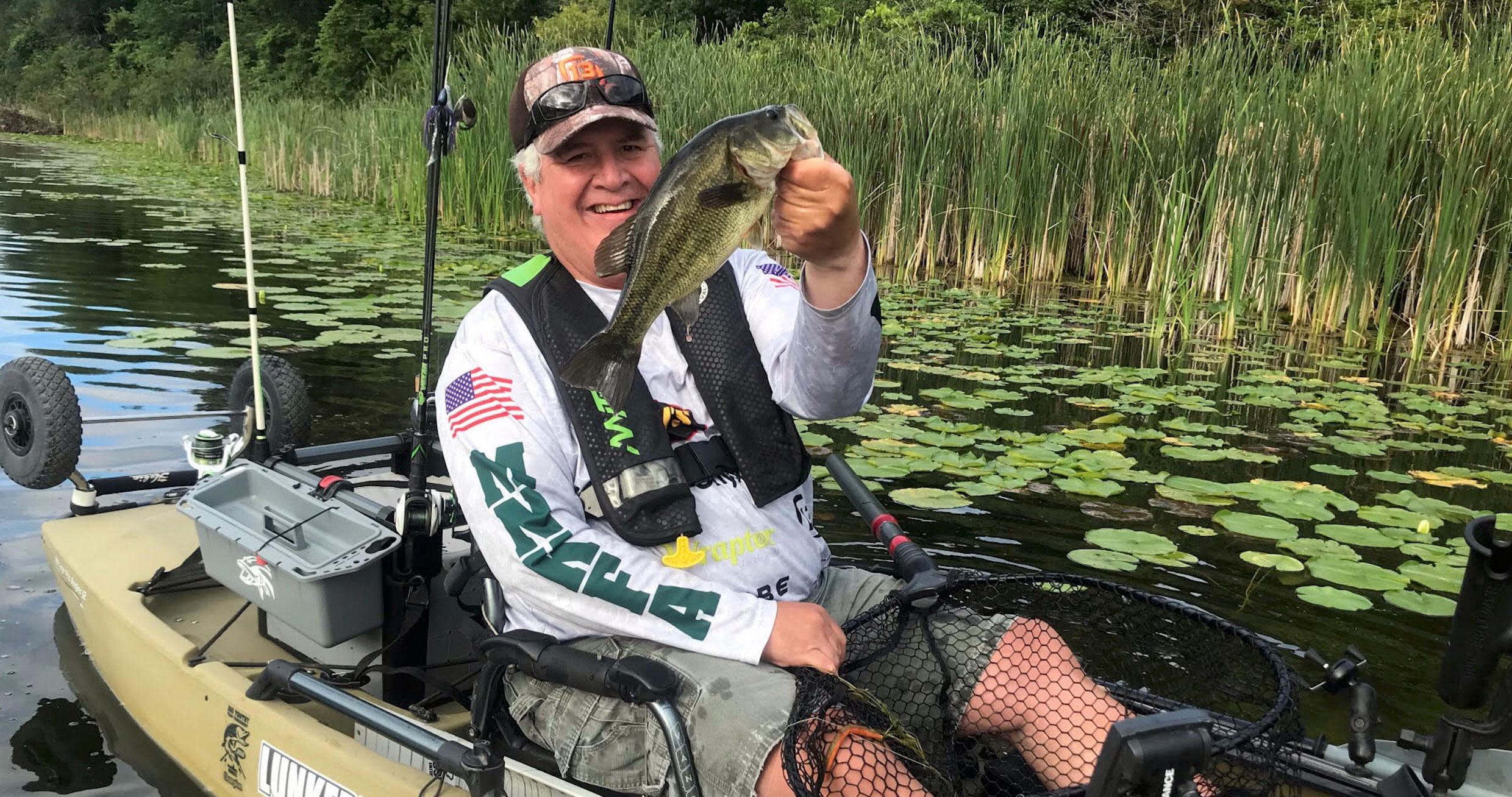
Kayak Bass Fishing: Expert Strategies to Reel in the Big Ones
If you’re an angler looking to take your fishing game to the next level, then kayak bass fishing might be just the adventure for you. Kayak bass fishing is very popular in Minnesota among beginners and elite kayak bass anglers alike. In this article, we will explore expert strategies to help you reel in the big ones!
Discover how to navigate different water conditions, learn effective casting and retrieval techniques, and understand the best times and places to find bass. Our expert strategies and insider knowledge will give you the confidence and skills to hook and land those trophy-sized bass.
Essential gear and equipment for kayak bass fishing
When it comes to kayak bass fishing, having the right gear and equipment is crucial. Here are some essentials to consider:
Kayak: Choosing the right kayak is the first step towards a successful fishing trip. Look for a kayak with stability, maneuverability, and ample storage space for your gear. Sit-on-top kayaks are popular among kayak bass anglers due to their stability, wide open decks and ease of use. Sit-on-top models are available in paddle, pedal and motorized versions.
Paddle: If you have a paddle kayak, a reliable paddle is essential for maneuvering your kayak on the water. Look for one that is lightweight, durable, and comfortable to hold.
Fishing Rod and Reel: Invest in high-quality fishing rods and reels that are suitable for bass fishing. Medium to medium-heavy rods with a fast action and are commonly used for kayak bass fishing. I use a spinning reel or bait caster depending on what tactic I’m fishing. I also have at least 4 different tactics ready in my crate rod holder so I can change tactics quickly while I’m on the water.
Tackle and Lures: Stock up on a variety of tackle and lures, including soft plastics, jigs, crank baits, and topwater baits. Different lures work best in different conditions, so having a diverse selection will increase your chances of success. Some of my favorite tactics for kayak bass fishing are: whacky rig, Texas rig, drop shot, spinner baits and chatter baits. It’s fun to try other tactics too.
Safety Gear: Safety should always be a priority when kayak fishing. Ensure you have a personal flotation device (PFD), a whistle, and a waterproof first aid kit.
Remember to check your local regulations for any additional gear requirements or restrictions.
Choosing the right kayak for bass fishing
Selecting the right kayak for bass fishing is crucial for a comfortable and successful fishing experience. Consider the following factors when choosing your kayak:
Stability: Look for a kayak with a stable hull design to provide stability, especially when casting or reeling in a big bass.
Maneuverability: A kayak that is easy to maneuver is essential for navigating through tight spots and reaching bass in hard-to-reach areas. Look for a kayak with good tracking and maneuverability features.
Size and Weight: Consider the size and weight of the kayak, especially if you plan on transporting it by yourself. A lightweight kayak will be easier to handle both on and off the water. Kayaks are rated for how much weight can safely be on board. Consider your own weight, plus the weight of the gear, anchors, battery, motor and more when you pick a kayak for bass fishing.
Storage: Ample storage space is essential for stowing your fishing gear and any additional equipment you may need. Look for kayaks with built-in storage compartments and bungee cords to secure your gear.
Comfort: Spending long hours on the water can take a toll on your body. Look for a kayak with a comfortable seat and adjustable footrests to ensure a comfortable fishing experience. Kayak bass fishing tournaments can be 7 hours or longer. Being comfortable will keep you focused on fishing.
Remember to test out different kayaks and sit in them before making a purchase to ensure the kayak fits your body and fishing style.
Understanding bass behavior and habitat
To be successful in kayak bass fishing, it’s important to understand the behavior and habitat of bass. Here are some key insights to keep in mind:
Feeding Patterns: Bass are known to be opportunistic feeders, meaning they will strike at prey when it presents itself. They tend to be most active during low light conditions, such as early morning, late evening, and overcast days. However, bass can be caught at any time of the day with the right techniques.
Habitat: Bass prefer areas with cover, such as submerged vegetation, fallen trees, rocks, and docks. Look for these types of structures when fishing, as they provide hiding spots for bass and attract prey.
Seasonal Movements: Bass exhibit seasonal movements based on water temperature and food availability. During the warmer months, they tend to move towards deeper water, while in colder months, they seek warmer pockets of water. Understanding these movements can help you locate bass more effectively.
Water Clarity: Bass are sensitive to water clarity. In clear water, they may be more wary and require finesse techniques, while in murky water, they rely more on their lateral line to detect prey. Adjust your fishing techniques accordingly based on water clarity.
By understanding these insights, you can better predict where bass are likely to be and adjust your fishing strategies accordingly.
Best time and locations for kayak bass fishing
Timing and location play a crucial role in kayak bass fishing success. Here are some tips to help you maximize your chances of catching bass:
Early Morning and Late Evening: As mentioned earlier, bass tend to be more active during low light conditions. Early morning and late evening are prime times for bass fishing as they are more likely to be feeding closer to the surface.
Overcast Days: Overcast days provide ideal fishing conditions as they reduce the amount of light penetrating the water. Bass feel more comfortable feeding in shallower water during these times.
Structure and Cover: Look for areas with structure and cover, such as weed beds, submerged vegetation, fallen trees, and docks. These areas provide hiding spots for bass and attract baitfish.
Shallow and Deep Water: Bass can be found in both shallow and deep water depending on the season and water temperature. During warmer months, they may move towards deeper water, while in colder months, they may be found in shallower pockets of water.
Local Knowledge: Seek out local knowledge or consult fishing reports to learn about the best locations and times for bass fishing in your area. Local anglers often have valuable insights that can help you narrow down your search.
Remember, bass can be found in a variety of water bodies, including lakes, rivers, ponds, and reservoirs. Explore different locations to discover the best spots for kayak bass fishing in your area.
Techniques for catching bass from a kayak
Now that you have the right gear, kayak, and knowledge of bass behavior, it’s time to learn some effective techniques for catching bass from a kayak. Here are a few techniques to try:
Casting and Retrieval: Mastering your casting and retrieval technique is essential for success. Practice different casting techniques, such as flipping, pitching, and casting parallel to structure, to increase your chances of attracting bass.
Topwater Fishing: Topwater lures can be highly effective for attracting bass. Use lures like buzzbaits, poppers, and frogs to mimic prey on the water’s surface. Whopper Ploppers are my favorite top water lure. The visual and auditory cues created by these lures can trigger aggressive strikes from bass. Plus, top water strikes are the most exciting action you can have on the water in my opinion!
Texas Rig: The Texas rig is a versatile and effective technique for fishing in heavy cover. It involves rigging a soft plastic bait weedless with a bullet-shaped weight. This setup allows the bait to be presented in areas with submerged vegetation or around cover without getting snagged.
Jigging: Jigging involves using a jig and trailer combination to imitate a baitfish or crawfish. This technique is particularly effective in deeper water or around structure. Experiment with different jig sizes, colors, and retrieves to find what works best for the conditions.
Drop Shot: The drop shot technique is perfect for fishing in deeper water or when bass are less active. It involves suspending a soft plastic bait above a weight, allowing it to hover just above the bottom. This technique can be effective when bass are holding in a specific depth range.
Remember to experiment with different techniques and adapt them to the conditions you’re fishing in. Bass can be selective at times, so be willing to try different lures and presentations until you find what works.
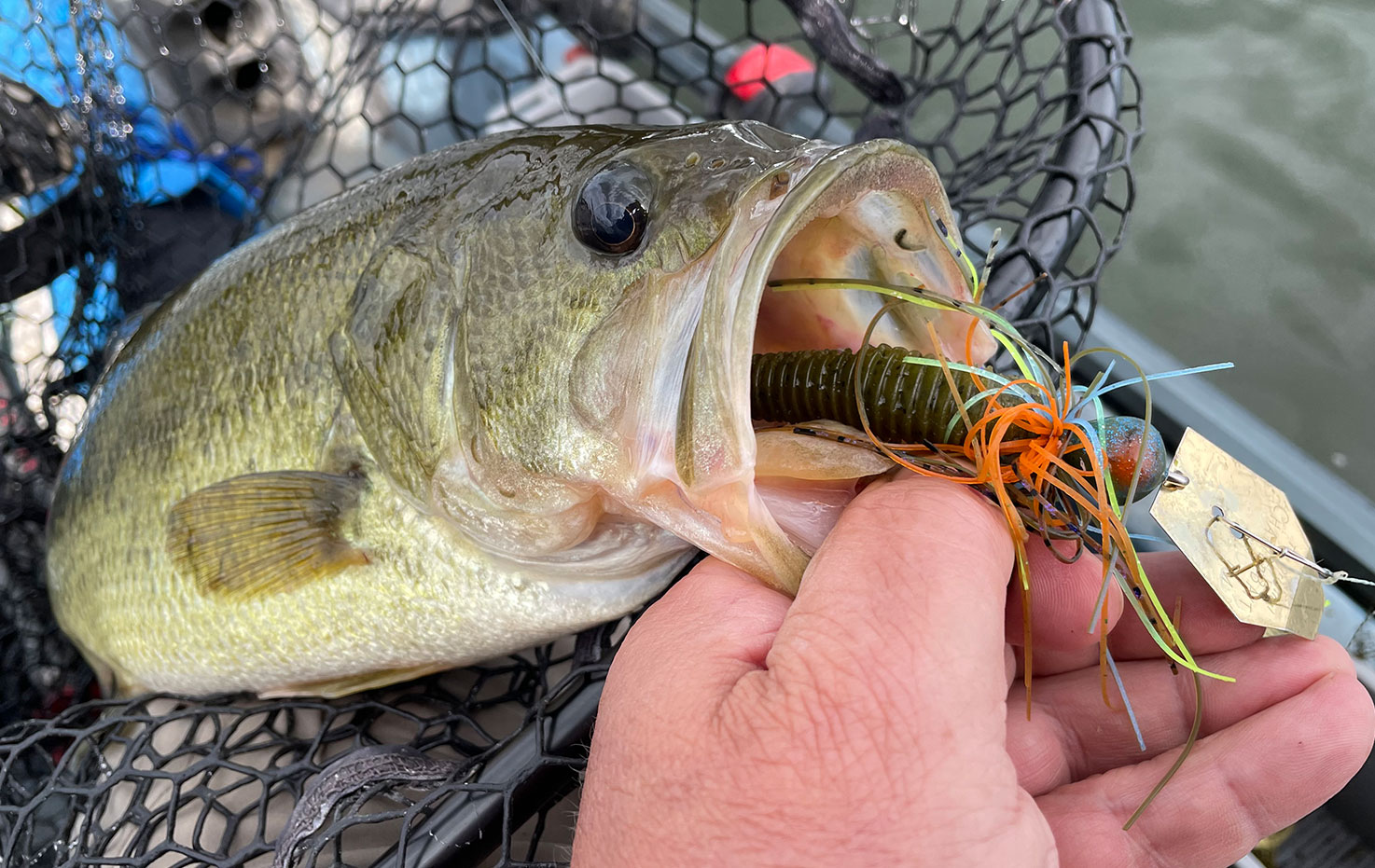
Tips for lure selection and presentation
Choosing the right lure and presenting it effectively can make a significant difference in your kayak bass fishing success. Here are some tips to keep in mind:
Matching the Hatch: Pay attention to the natural prey present in the water body you’re fishing. Try to match your lure to the size, shape, and color of the prey to increase your chances of attracting bass.
Vary Your Retrieve: Bass can be attracted to different retrieve speeds and actions. Experiment with slow retrieves, fast retrieves, and pauses to mimic the movement of injured or fleeing prey.
Color Selection: Different lure colors work best in different water and lighting conditions. In clear water, natural colors like green pumpkin and watermelon can be effective, while in murky water, brighter colors like chartreuse and black can help increase visibility.
Confidence Baits: Sometimes, using a lure you have confidence in can make all the difference. If you have a go-to lure that has consistently produced results for you, don’t be afraid to stick with it.
Presentation: Pay attention to how you present your lure to bass. Avoid making loud noises or heavy splashes that could spook them. Instead, try to make subtle and natural presentations to entice strikes.
Remember, bass can be selective at times, so be willing to switch up your lures and presentations until you find what they’re biting on.
Minnesota Kayak Bass Fishing Tournaments
MNKFA (Minnesota Kayak Fishing Association) organizes kayak bass fishing tournaments and events. Participating in these tournaments can provide valuable experience and allow you to connect with other anglers in your area and learn more about kayak bass fishing. Remember to check the rules and regulations of each tournament before participating.
Embracing the thrill of kayak bass fishing
Kayak bass fishing offers anglers of all skill levels a thrilling and rewarding experience. With the right gear, knowledge, and techniques, you can increase your chances of reeling in those big bass. Remember to always prioritize safety, respect the environment, and have fun on the water. So, grab your paddle, gear up, and embrace the adventure of kayak bass fishing. The big ones are waiting for you!
Disclaimer: Always comply with local fishing regulations and practice ethical fishing techniques.
